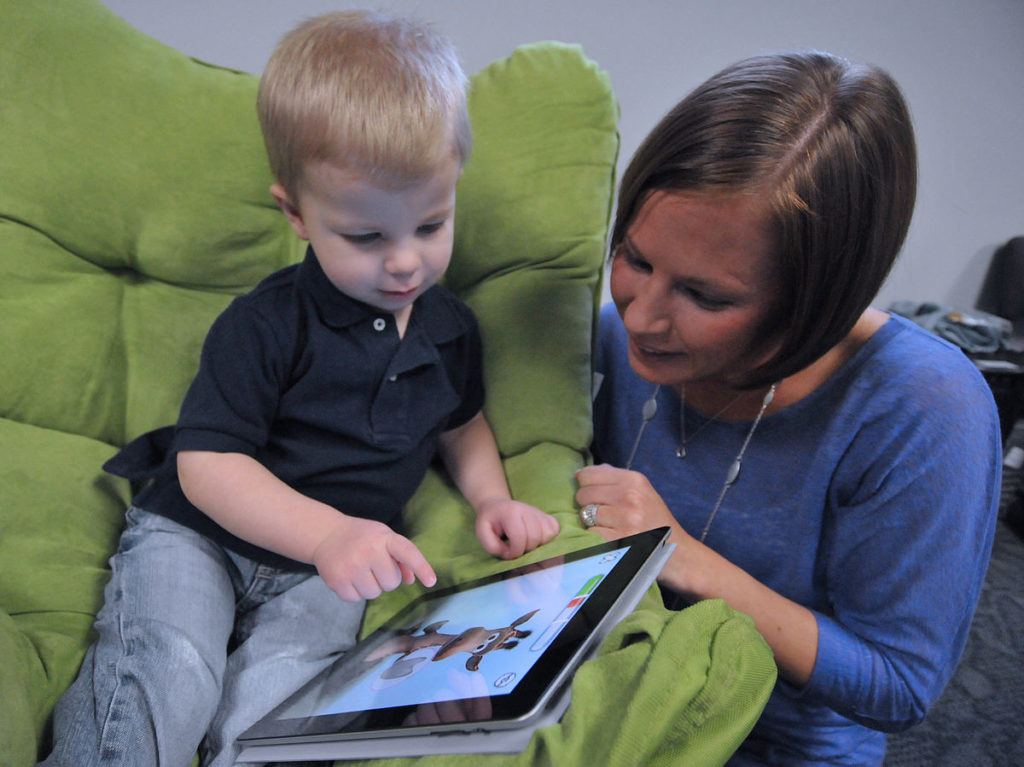children and television Credit: Peter Macdiarmid/Getty Images)
Digital technologies are evolving at breakneck speed, much faster than our understanding of the moral, ethical, physical, and social ramifications of their dominance in our lives. The first smartphone had its debut in 2007. A decade later, software can accurately read emotion from facial expressions, seamlessly manipulate video images, and invest objects with the capacity to do our bidding and cause us to love them. In market-driven economies, it’s worrisome enough that the wonders of digital technologies afford corporations endless opportunities to access and manipulate the hearts and minds of adults, but the potential harms to children are more troubling.
Babies and screens
While there’s scant evidence that babies and toddlers benefit from screens (the exception may be the family bonds strengthened through long-distance video chats with beloved relatives), children as young as preschoolers can learn from thoughtfully created television and digital content. Older children and adolescents can benefit even more. But, despite the potential benefits, the increasing prevalence of screen technologies in the lives of children is not benign.
Beginning in infancy, children around the world spend an inordinate amount of time with screens. In the United States, 37% of babies under two watch television every day. On any given day, those who watch average almost one and a half hours. In Australia, 40% of 18-month-old babies spend more than two hours a day with screens. In 2014, an international study of 9 to 11-year-olds found that they spend an average of 2.6 hours a day with screens, with children in Brazil spending the most time (3.5 hours) and children in India spending the least (1.8 hours)1. On average, preschool children in the United Kingdom spend more than four hours a day with screens, including television, online media and games. In early adolescence, that number rises to about seven hours per day2.

Developmental and health problems
These hours become more worrisome as evidence accumulates about the addictive properties of digital media3 4. A 2018 literature review in the journal Environmental Research identified several evidence-based, child-related concerns about addiction to video games, social media and the internet. New brain imaging techniques suggest that screen technologies can change the actual architecture of the brain5.
Excessive screen time is a factor in a host of problems for children and adolescents. For children younger than two, it’s a factor in delaying language development6 7.
Time with television and digital media are linked to childhood obesity8 as well as sleep disturbances from infancy to adolescence9 10. For teenagers, time with social media is correlated with depression and anxiety11.

 Main Edition
Main Edition US
US FR
FR







Join the discussion
Join like minded readers that support our journalism by becoming a paid subscriber
To join the discussion in the comments, become a paid subscriber.
Join like minded readers that support our journalism, read unlimited articles and enjoy other subscriber-only benefits.
Subscribe